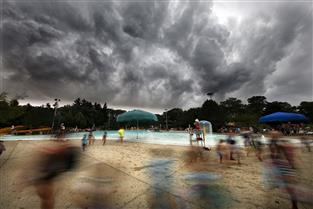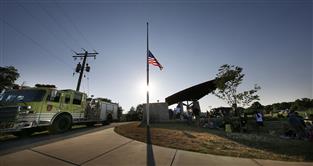Wauwatosa School District rolls out new teacher evaluation model
Board wonders how student achievement will be measured
As the Wauwatosa School District prepares for the rollout of a new teacher evaluation model to comply with Wisconsin's Educator Effectiveness System requirements, the School Board is interested in more details on how it would tie in with the district's recently adopted teacher compensation model and how student achievement would be factored into both of those.
That was the main concern that came up following a March 24 School Board report from Human Resources Director Jack Bothwell on the professional evaluation system, which would apply to teachers, as well as educational specialists and administrators.
After piloting the Wisconsin Department of Public Instruction's evaluation model, the district has opted to implement a similar model developed by CESA 6, known as the "Effectiveness Project," Bothwell explained, which is based on an overarching vision of increasing student achievement by ensuring "an effective teacher in every classroom, an effective leader in every school and an effective educational system in every community."
The main appeal of the CESA 6 model, Bothwell said, was that it follows virtually the same evaluation format for teachers, administrators and educational specialists, which include school counselors; psychologists and social workers; occupational and physical therapists; and literary specialists, for instance. The comprehensive evaluation system consists of self-evaluations, observations, documentation logs, surveys, goal-setting, performance improvement and interim and summative reports, with web-based software enabling staff to easily track those components.
As in the past, the district would conduct summative evaluations every three years for each of the employee groups encompassed by the model, except in the case of new teachers who would be evaluated every year during their first few years in the district, Bothwell said. Summative evaluations would be based on a four-point rating scale, with levels of distinguished, effective, developing (which indicates that improvement is needed) and unacceptable.
Some district staff have already begun the process of completing system training, which will be required for employees being evaluated under the model and those performing the evaluations, as well as coaches who will provide implementation support to both evaluators and evaluates, and volunteers who will collaborate with supervisors this spring and summer in preparation for the full system rollout planned for fall 2014. Teachers have not heard much about the model yet, Bothwell said, but will be receiving more information and training over the course of the next several months.
Student achievement
Bothwell stressed that students and their achievement will remain a top focus of the evaluation model, which meets the state requirement that educator evaluations be based 50 percent on educator practice and 50 percent on student outcomes.
"The bottom line is there's nothing, absolutely nothing, happening in education until it's happened to a student," Bothwell said.
How exactly the district will measure student outcomes or achievement in relation to the evaluation model is not completely clear at this point, however. In fact, board member Phil Kroner described it as the "most unclear part" of both the evaluation and compensation plans.
"I understood that we weren't going to use testing data in the compensation model, but this heavily relies on it," Kroner said. "It would be helpful to have that laid out in a more clear way as to how the testing that we're going to do is going to fit into the evaluation model and into the compensation model as well."
One example of how student outcomes might be measured by the district would be through smart goals set by teachers, said Superintendent Phil Ertl. But Bothwell and Ertl said the state has yet to make a determination on how state assessment data would be factored into the student outcomes element of the evaluation system.
As far as how the evaluation and compensation models are connected, Ertl explained that the evaluation model will help better inform the rubric the district uses in determining compensation, as well as decisions related to levels and movement throughout the salary schedule. The new compensation model, which consists of a scale of three basic levels based on experience and performance, was adopted by the board last month.
Board members stressed the need for the district to provide more information on the student outcomes that are expected of teachers, as well as explain more specifically how those are connected to compensation, as soon as that information becomes available.
"To me, that's not something we figure out later," said board member Mary Jo Randall.
Time commitment
In response to board concerns about the time commitment involved with the new model, Bothwell said it mainly comes down to documentation of things teachers are already doing. The evaluation model will not differ much from the professional development plans already being completed by many teachers as part of their licensing process, Bothwell noted.
Although the model may involve more work for administrators, "I think we're going to see a different type of system that isn't just going to be administrators feeding into the evaluation," Ertl said.
"A principal that has 60 teachers in a building, they can't do it alone," he said. "Looking at different models, the leadership in the buildings is something we can discuss, and I think you'll see something on that in the near future."
Ertl told the board that Wauwatosa likely will be able to draw information from the experiences of other school districts using the CESA 6 Effectiveness Project model. More than 170 of the state's approximately 420 districts are also following the model, he said, with about 100 of those districts having successfully implemented it for more than a year.
For more information on the CESA 6 "Effectiveness Project" professional evaluation system, visit cesa6.org/products_services/teacher_leader_effect. More on Wisconsin's Educator Effectiveness system requirements can be found at ee.dpi.wi.gov.
More from News and Features
- Anodyne Coffee plans to open location in Wauwatosa Village
- Wauwatosa Meetings: Aug. 4
- Video: Wauwatosa girl's curbside ice cream stand raises money for the hungry
- Wauwatosa News and Notes: Hands-only CPR training offered; Firefly Art Fair is Aug. 6-7
- Wauwatosa Ask Now: Why are there barriers and fencing along the North Avenue bridges over the Menomonee River?
- Mystery Photo Contest: July 28
- Wauwatosa gears up for National Night Out event, this year at the zoo
- Election 2016: Wisconsin's 4th District candidates weigh in
- Wauwatosa's Luther Manor residents share smiles through flower delivery
- Wauwatosa Police Report: July 17-23













